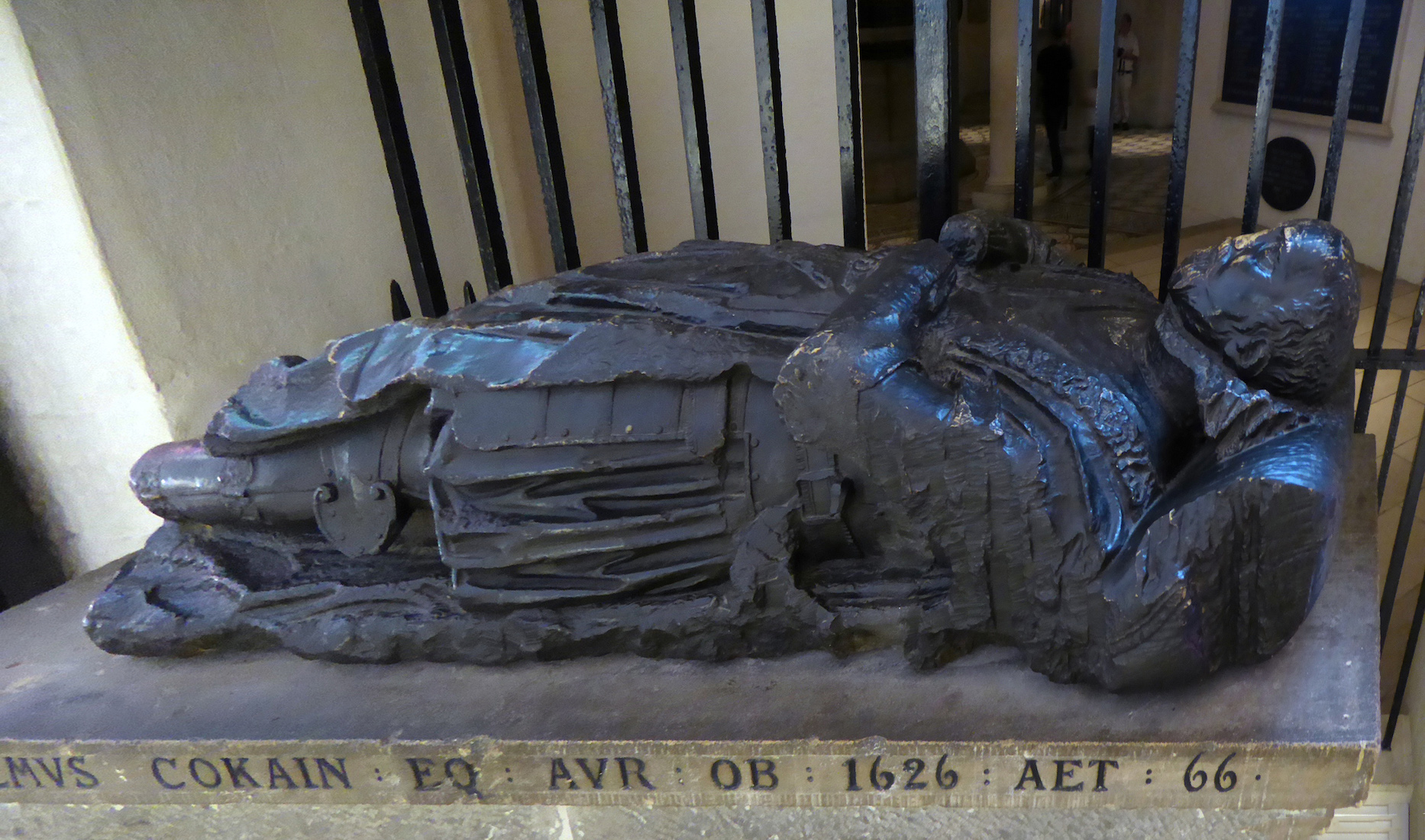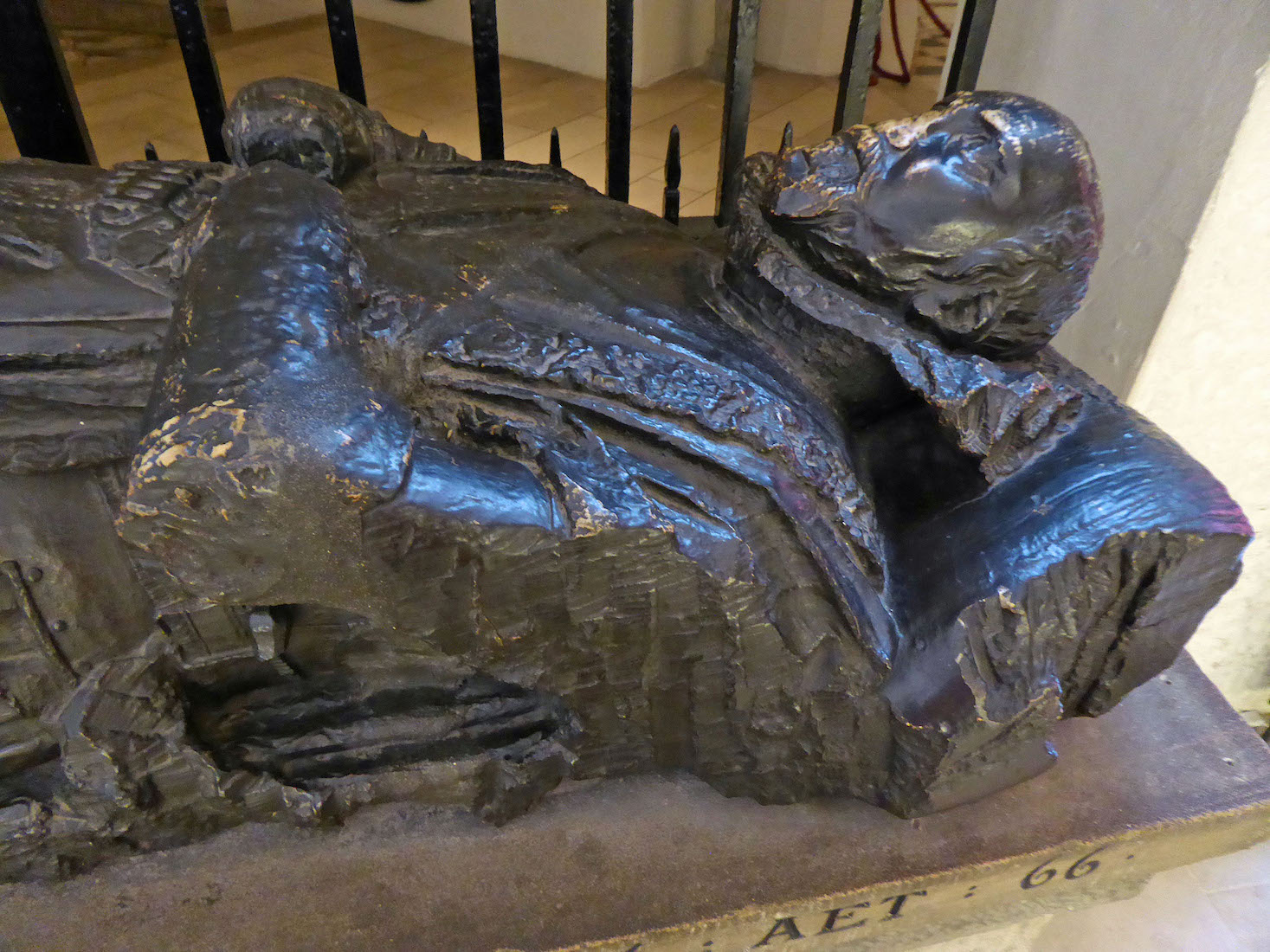21. COPE AND EFFIGIES
1. QUEEN’S JUBILEE COPE PRS
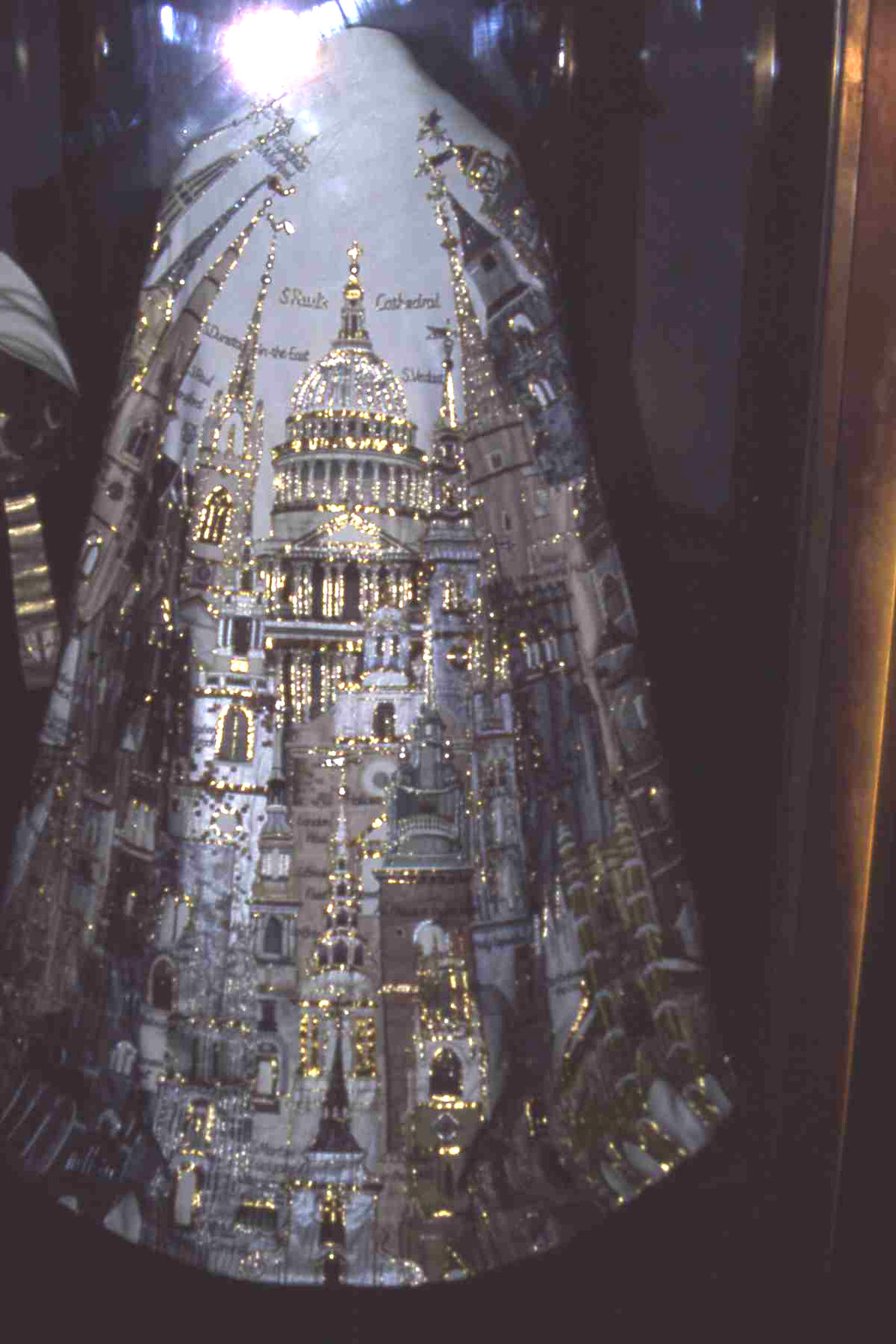
The Jubilee Cope, Stole and Mitre were designed by Beryl Dean and made by the needlework students at the Stanhope Institute in 1976-1977. Thousands of hours of needlework went in to decorating this extraordinary vestment set composed of a cope (a long cloak) a stole (a band of material worn over the shoulders) and a mitre (the peaked ceremonial head-dress worn by bishops). The set was originally presented to the Diocese of London to commemorate The Queen’s Silver Jubilee in 1977 and was worn at the special Thanksgiving Service that year. It has been worn on many occasions since and is still worn by the Bishop of London when officiating at special services. A highly complex design covers the surface of the cope: the spires of seventy-two churches in the Diocese of London jostle alongside three Royal Peculiars (ecclesiastical institutions outside the jurisdiction of the bishop), St Paul’s Cathedral and the Georgian House in Queen Square, formerly the home of the Stanhope Institute. The accompanying mitre is embroidered with the façade of Westminster Abbey (an extra tower has been added possibly to make this less apparent) and, on the back, a symbolic ship. The stole is embroidered with crocketed spires.
2. NICHOLAS BACON 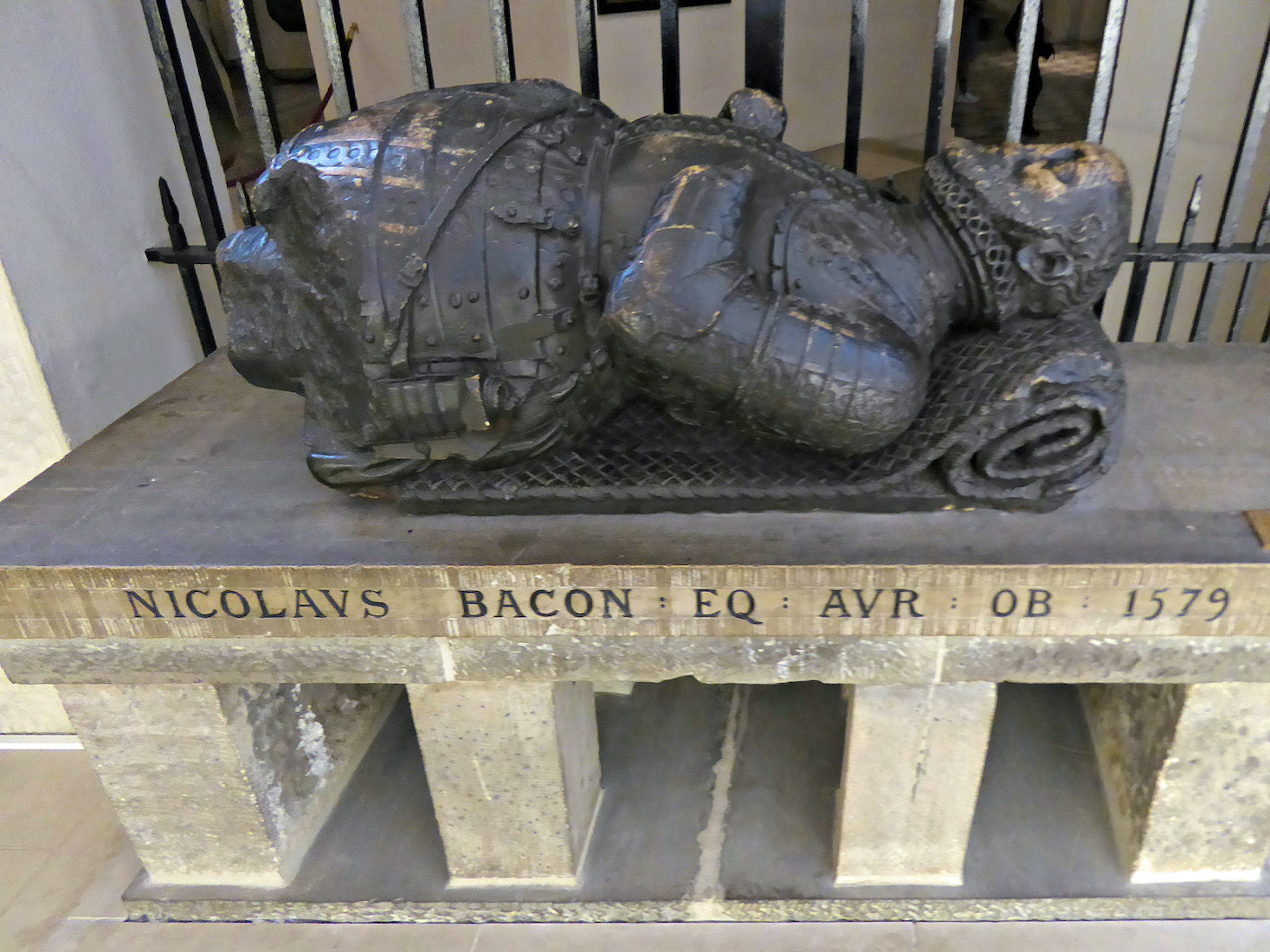
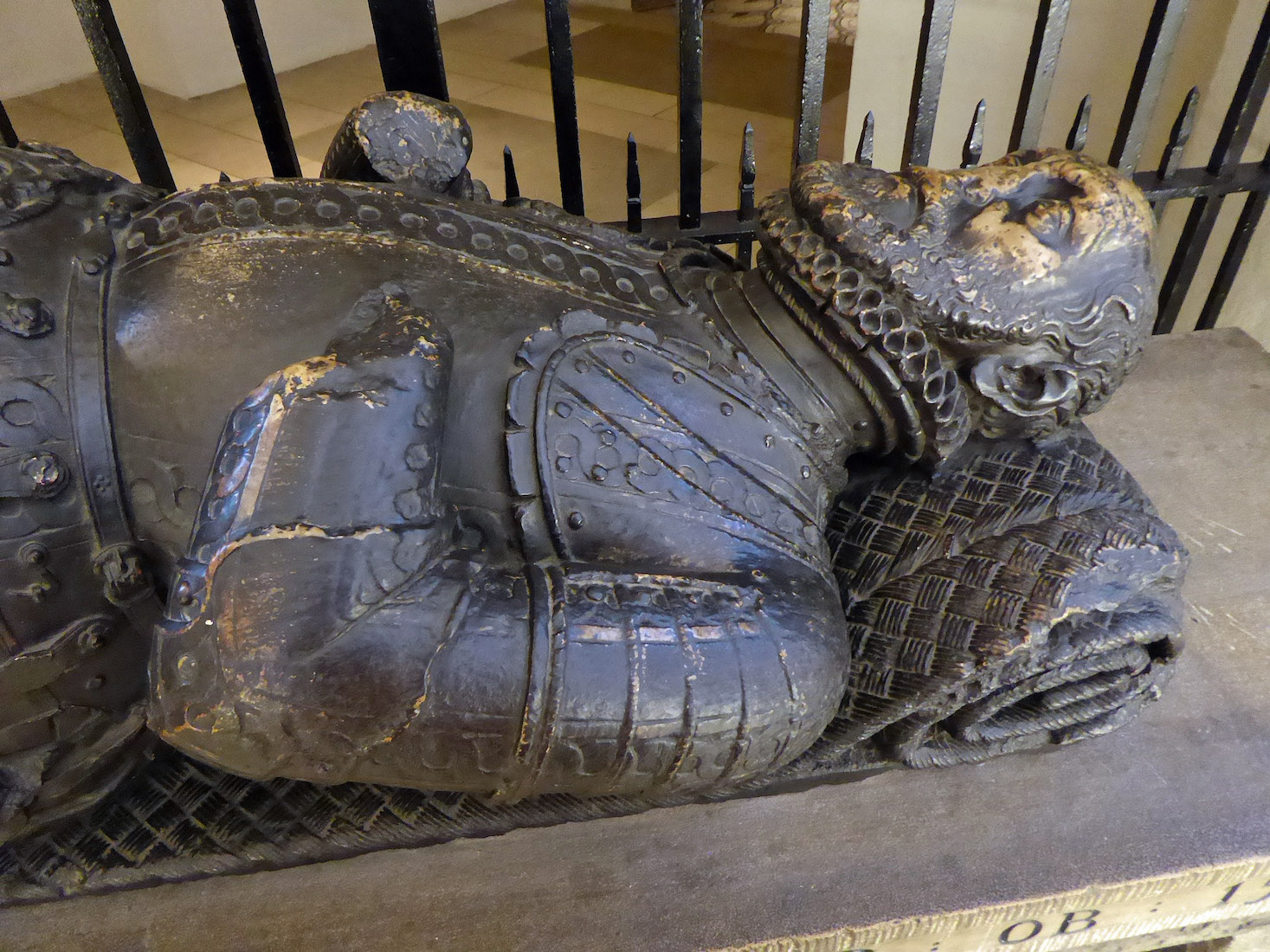
There is a North-South aisle on either side of the Oculus in the North transept, and more memorials can be found here. These include the blackened effigy of Sir Nicholas Bacon, (1510 — 1579) who was a high official in the government of Queen Elizabeth I and father of the renowned philosopher Francis Bacon.
3. WILLIAM COCKAYNE
Also in this transept is the blackened effigy of William Cockayne. Sir William Cockayne (1561 – 1626) was a seventeenth-century merchant, alderman, and Lord Mayor of the City of London. In 1614, while serving as governor of the Eastland Company of English merchants, Cockayne devised a plan to dye and dress English cloth, England’s main export at the time, before shipping it abroad. Cockayne convinced King James I to grant him a monopoly on cloth exports as a part of this plan, intended to increase the profits of English merchants, while boosting royal customs duties through bypassing Dutch merchants. The scheme failed as the Dutch refused to purchase finished cloth and instead engaged in a trade war with England. As a result, the English cloth trade was depressed for decades.

